|
Firstly, a massive thank you to our Patreon supporters. Your generosity touches me deeply. These supporters have become the single biggest contributing factor to the survival of DVDBeaver. Your assistance has become essential.
What do Patrons receive, that you don't?
1)
Our
weekly
Newsletter
sent to your Inbox every
Monday morning!
Please consider keeping us in existence with a couple of dollars or more each month (your pocket change!) so we can continue to do our best in giving you timely, thorough reviews, calendar updates and detailed comparisons. Thank you very much. |
![]()
![]()

![]()
![]()
|
Search DVDBeaver |
S E A R C H D V D B e a v e r |
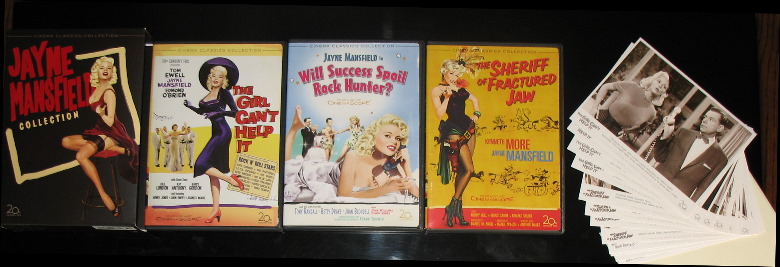 |
Jayne Mansfield Collection (3-DVD)
NOTE: The Girl Can't Help Criterion Blu-ray is compared to this DVD HERE
NOTE:
The Blu-ray
of
Will Success Spoil Rock Hunter?
is compared
HERE!
The Girl Can't Help It The Sheriff of Fractured Jaw Will Success Spoil Rock Hunter
Titles
 |
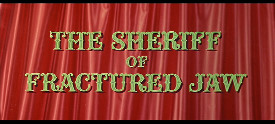 |
.jpg) |
|
As much as I’d like to say that Jayne Mansfield was a good actress, her performances reveal little more than rare physical endowments and poor vocal ability. Perhaps that’s a bit harsh, but Mansfield was no Marilyn Monroe, regardless of Twentieth Century Fox’s many brazen attempts to make her appear so. Instead, Mansfield was much more of a novelty act. After numerous visits to the Playboy Mansion, an infamous series of photos in Hugh Hefner’s magazine, and the first nude appearance in an American film (“Promises, Promises,” 1963), Mansfield was branded with a sexpot image. In addition to being stereotyped, her career in acting began a steady decline only four years after her first starring performance in the rock n’ roll comedy, “The Girl Can’t Help It” (1956), which was, evidently, a blessing and a curse. The film paired Mansfield with offbeat director Frank Tashlin, who would later cast her in his masterpiece, “Will Success Spoil Rock Hunter?” (1957). However, it was her role in “The Girl Can’t Help It” that culminated in her seminal performance and pigeonholed the actress as a sex-crazed bombshell. In watching Mansfield’s numerous efforts to sway audiences with her stiff saunter and utterly clueless remarks, one can’t help but question the pressure Fox executives were placing on her to convey very specific qualities; it wasn’t just a coincidence that she exhibited a striking resemblance to Marilyn Monroe. Apparently, the studio executives were frustrated with Monroe’s poor work ethic and numerous late arrivals on set. Mansfield had the figure and the potential to be a suitable replacement for Marilyn, and if she were under such an impression, there was obvious incentive for her to follow Monroe’s onscreen characteristics to a tee. In retrospect, it was an unfortunate mistake to do so. Mansfield had future potential with a genuinely likable persona (when she wasn’t incessantly whining or squealing under the direction of Tashlin) and a dedication that easily surpassed that of Monroe. Alas, Mansfield’s career now showcases how detrimental a few poor decisions can be in Hollywood. One would hope that with such an ill-fated career, Mansfield’s personal life would hold some redemption; but if anything, her life off-camera was far more tragic. At the age of 34, Mansfield died in a gruesome car accident; her three children, who were also in the car, survived, albeit with the horrific vision of one of Hollywood’s most dreadful accidents.
Billed as the greatest rock n’ roll film of-all-time by several critics upon its release, “The Girl Can’t Help It” is less a film about rock n’ roll than it is a biting satire of 1950s trends and gender relations. More so, Tashlin uses rock n’ roll to finesse his highly entertaining critique of showbiz and the relevant ‘sex sells’ theme. Although the performances are staged adequately in glorious color and feature major talents of the time period (Little Richard, Fats Domino, Abbey Lincoln, The Platters, Gene Vincent, and The Treniers to name a few), Tashlin hardly attempts to bottle the excitement and risqué nature of rock n’ roll. Instead, his concentration is on the story and Mansfield’s bosoms. In an attempt to duplicate the success of “The Seven Year Itch” (1955), Tom Ewell was cast opposite Mansfield. After proving he was more than capable of carrying a lead role in Billy Wilder’s film, Tashlin offered Ewell a script that held far more potential and fewer restrictions (the MPAA was extremely strict with films that suggested adultery, and due to the subject matter, “The Seven Year Itch” was re-scripted numerous times) than it’s predecessor. Ewell is perfect for the role of the washed up manager who becomes Mansfield’s love interest and his performance is a nice departure from the everyman he portrays in “The Seven Year Itch” (a role that Jack Lemmon would have been well-suited for). Ewell is just one of Tashlin’s wildly exaggerated characters that are well played by their respective actors. Edmund O’Brien, in the role of Mansfield’s controlling devotee, deserves particular recognition. O’Brien’s shameless approach to comedy is a welcome change-of-pace from his serious gangster pictures and his hilarious rendition of “Rock around the Rock Pile” (an absurd send-up to “Rock Around the Clock”) is easily one of the most memorable moments in his career. Evidently, the director had a successful method of coaxing hilarious characterizations from his actors. Tashlin may have clearly excelled in conveying a distinctly original style, but his knowledge of film history is hardly lost amidst his personal indulgences. In an impressive homage to “Citizen Kane,” Tashlin has Tom Miller (Tom Ewell) seated in Marty Murdock’s (Edmund O’Brien) apartment watching newsreels of Marty’s rise and fall as a crime lord involved in shifty gambling practices. As the two men sit in darkness, watching the footage on Marty’s home-theatre system, high levels of light stream through the projection room just as they did when legendary cinematographer Gregg Toland lit the famous newsreel sequence in Orson Welles’ classic. It’s a great scene for Tashlin’s unique spin on a classic moment in film history and the opportunity to see Welles receiving much deserved acknowledgement long before most critics caught on to the film’s tremendous achievements. In his next film, “Will Success Spoil Rock Hunter?,” Tashlin exuded an even bolder critique of 1950s pop culture. This time around, more critics would take note of Tashlin’s stylistic achievements. Jean-Luc Godard hailed it as a great film and derived his unique use of color in the 1960s from Tashlin’s experimental use of cinemascope. Time Magazine, as quoted on the film’s cover art, named it the funniest film of 1957. These two respected sources reveal precisely what makes Tashlin’s film work so well--the humor and aesthetic technique. Seeing as how the stage version of “Will Success Spoil Rock Hunter?” was responsible for launching Mansfield’s career, there was very little reason to find a new actress for the role of Rita Marlowe. Tony Randall, in his finest performance, was cast opposite her, in the title role. The two stars convey great chemistry, but it’s Randall’s fine sense of comic timing that is responsible for the majority of the laughter. His comfort on the silver screen (after working primarily in TV and on the stage) is immediately evident from the amusing opening title sequence (a Tashlin trademark) where he performs Fox’s famous musical number and introduces the film. Tashlin’s unrelenting satire of television and advertising has been criticized as dated by several of today’s critics, but in actuality, his film is all the more relevant in present society where consumers are bombarded with ads on almost every single electronic platform. The intermission where Randall comforts audiences who are expecting commercials is particularly entertaining and wickedly sardonic. As such, it’s not a stretch to label the film as one of the best comedies of the 1950s and Tashlin’s crowning achievement. |
Posters
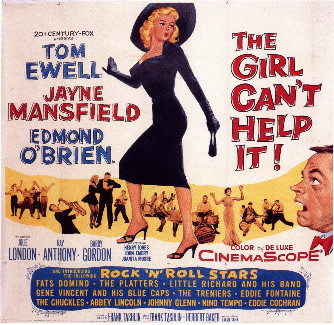 |
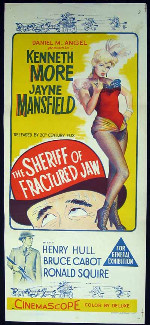 |
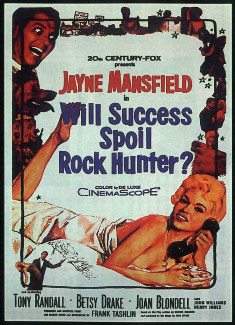 |
Theatrical Releases: Various from 1956-58
DVD Review: 20th Century Fox - Region 1 - NTSC
| DVD Box Cover |
|
CLICK to order from: |
| Distribution | 20th Century Fox - Region 1 - NTSC | |
| Time: | Respectively - 1:37:18 + 1:43:08 + 1:32:39 | |
| Bitrate: The Girl Can't Help It |
 |
|
| Bitrate: The Sheriff of Fractured Jaw |
 |
|
| Bitrate: Will Success Spoil Rock Hunter? |
 |
|
| Audio | English (mono and Stereo), Spanish DUB option in Will Success Spoil Rock Hunter? and The Girl Can't Help It. French DUB option in The Sheriff of Fractured Jaw | |
| Subtitles | English, Spanish, None | |
| Features |
Release Information:
Edition Details:
• Commentary by Toby Miller on The Girl Can't Help It
|
|
| Comments: |
NOTE: The Girl Can't Help Criterion Blu-ray is compared to this DVD HERE The Blu-ray of Will Success Spoil Rock Hunter? is compared HERE! *** NOTE: Although the 3 main features of this boxset are housed in individual keep cases (see images above and below) they are not sold separately at this time and can only be obtained in Fox's Jayne Mansfield Collection. Technical specifications of the discs: All region 1 coded in the NTSC standard, progressive and anamorphic in the cinemascope 2.35:1 ratio. Two of the discs offer audio commentaries. Image: Frankly, these transfers are rather unremarkable. There are no glaring flaws - colors are acceptable - no extensive artifacts - not particularly clean... but perhaps I was expecting more from these 50's cinemascope prints. They are certainly watchable, but I wish I was using the word 'pristine' instead. I'd say The Sheriff of Fractured Jaw looks the best of the three and Will Success Spoil Rock Hunter? probably the weakest in terms of image - but they are fairly consistent - not extravagant differences in comparing any of the three. Audio - Only Will Success Spoil Rock Hunter? appears to be in its original 4.0 channel - the other two are 2.0 stereo. I noticed no excessive dropouts and dialogue was clear and consistent. There are some DUBs - a Spanish DUB option in Will Success Spoil Rock Hunter? and The Girl Can't Help It and a French DUB option in The Sheriff of Fractured Jaw. Overall audio is given another passing grade. Extras - A film journal editor and professor Toby Miller fills in many details, in the The Girl Can't Help It commentary. Discussed are the huge media celebrations of Mansfields life and career. He keeps a good pace and certainly know his stuff. This commentary exceeded my expectations - very good work. Film Historian Dana Polan, whom you may remember from the commentaries on Emperor of the North ,on the Warner Film Noir Boxset 3 (Border Incident) and the Tough Guys Collection (Bullets or Ballots), switches gears on Will Success Spoil Rock Hunter? to explain many of the less obvious satirical jabs at the intentional artificialities in the film. I thought it was excellent - I enjoy each commentary I hear from him. Overall impression: I suspect the extras only really scratched the surface of what they could have, but if you were ever keen on seeing these comedies - the price is right. Compared to some of the Boxsets we have seen in the past couple of years - this holds its ground adequately although Fox could have expanded with more films and a bonus disc. |
DVD Menus
 |
 |
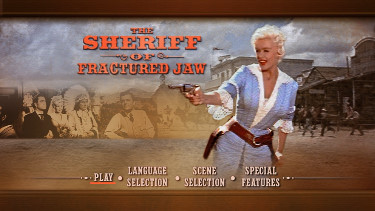 |
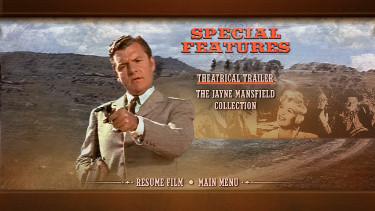 |
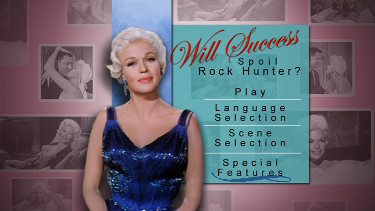 |
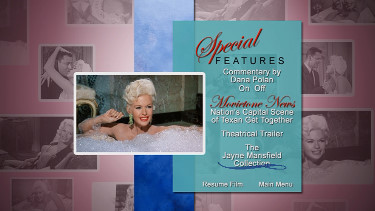 |
Extras:
A&E Biography
episode "Jayne Mansfield: Blonde Ambition"
Fox Movietone News footage "Nation's Capital Scene of Texan Get-Together"
Collection of postcard-size lobby card reproductions
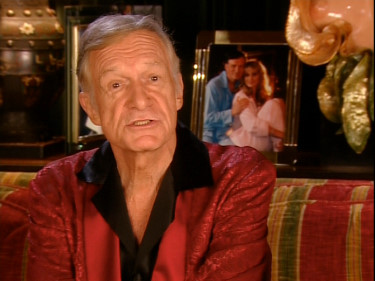 |
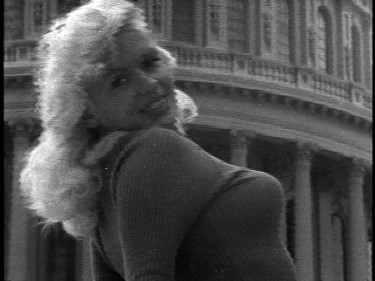 |
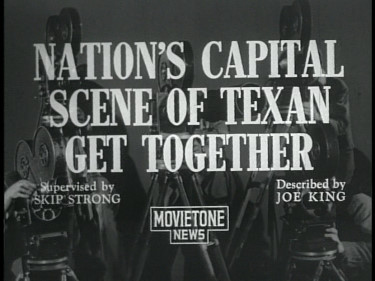 |
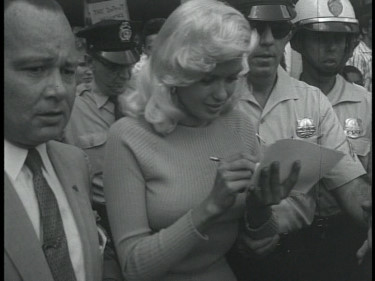 |
|
|
|
Individual Keep Case Cover
|
|
Screen Captures
The Girl Can't Help It USA 1956 Directed by Frank Tashlin
Starring Tom Ewell, Jayne Mansfield, Edmond O'Brien, Julie London and Ray
Anthony
|
|
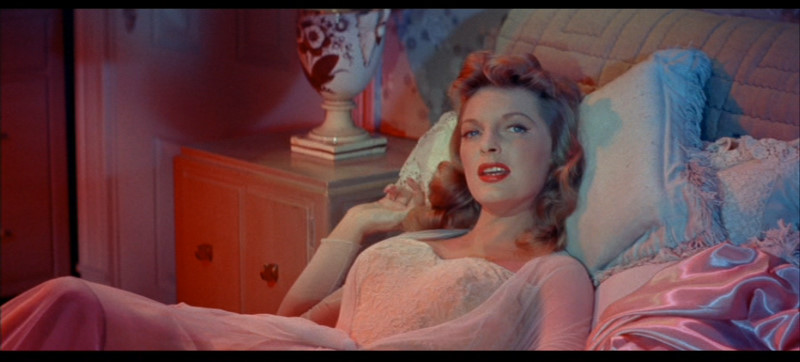 |
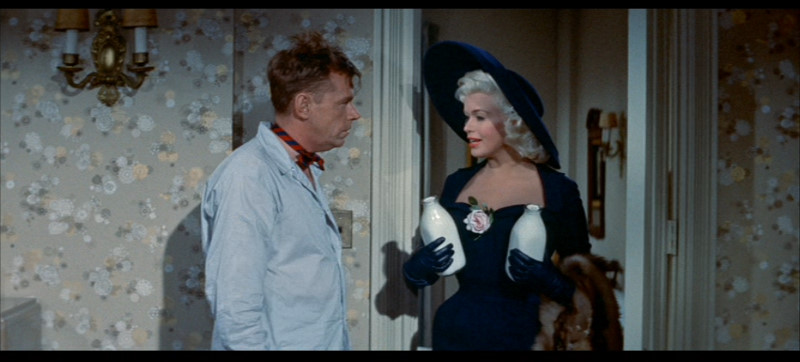 |
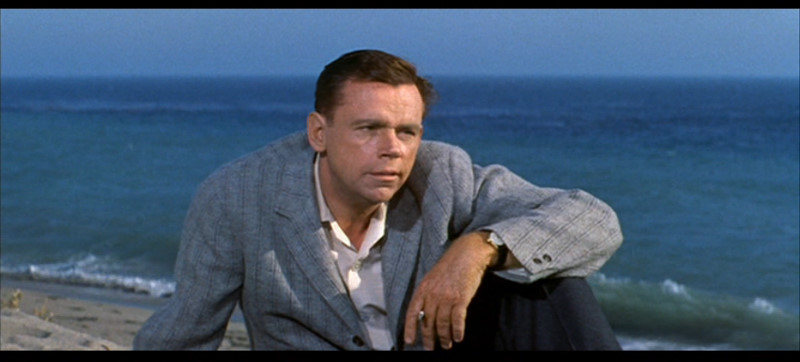 |
Individual Keep Case Cover
|
|
Screen Captures
The Sheriff of Fractured Jaw USA 1958 Directed by Raoul Walsh
Starring Kenneth More, Jayne Mansfield, Henry Hull and Bruce Cabot
|
|
|
|
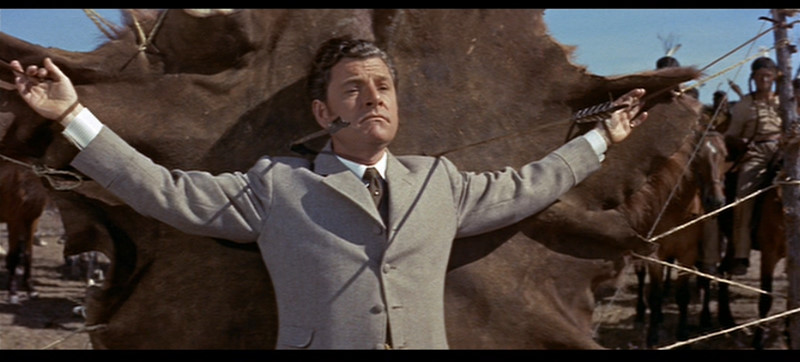 |
|
|
Individual Keep Case Cover
|
|
Screen Captures
Will Success Spoil Rock Hunter? USA 1957 Directed by Frank Tashlin
Starring Tony Randall, Jayne Mansfield, Betsy Drake and Joan Blondell
|
|
.jpg) |
.jpg) |
.jpg) |


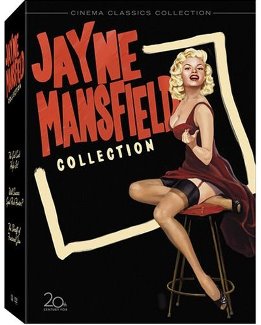
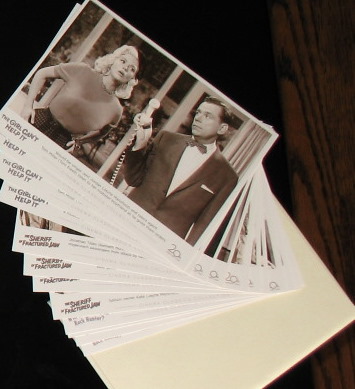
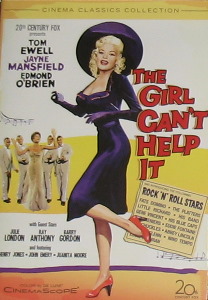
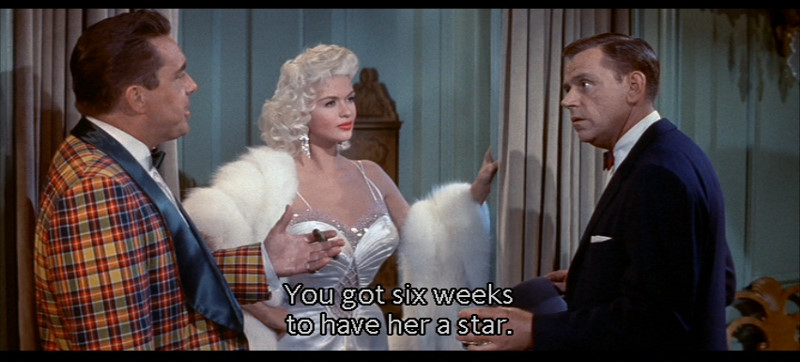
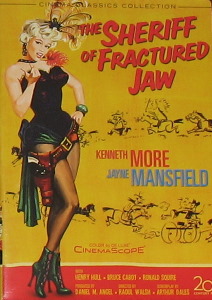
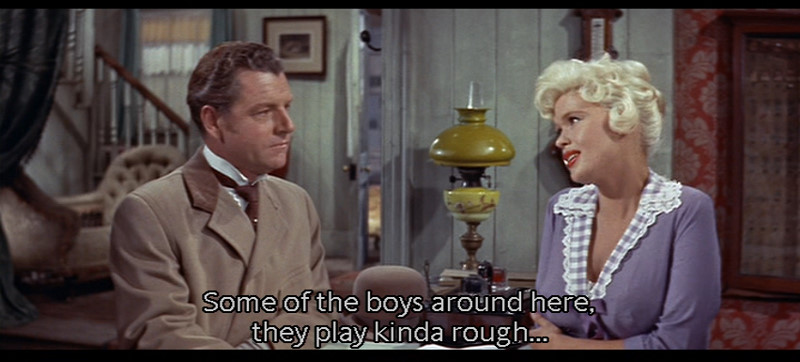
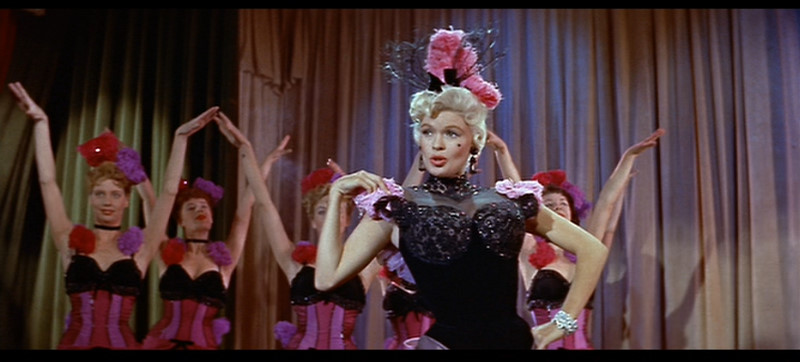
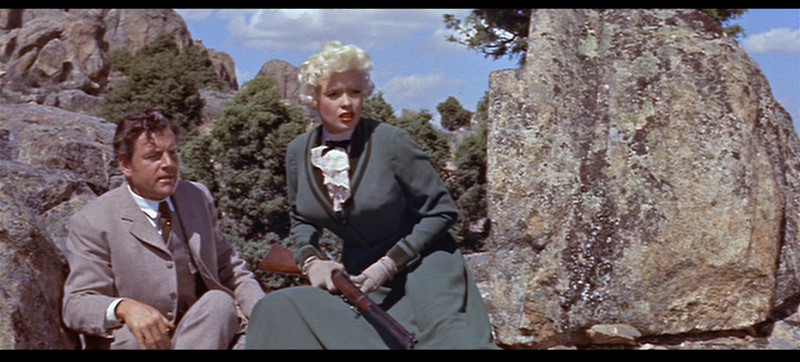
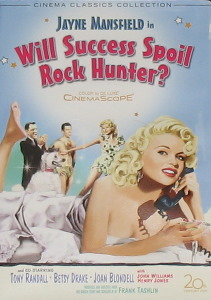
.jpg)

















